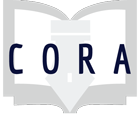Assignment
Evaluating Online Sources with Lateral Reading
This is a lateral reading 75 minute long lesson plan and worksheet assignment that introduces online source evaluation to undergraduate students, preferably first years. Lateral reading involves researching the content of a source as one reads it and this technique is popular with online fact checkers and journalists. The lesson plan calls for instructors to demonstrate lateral reading live (or via recording if asynchronous) using resources found on Google. It then asks students to repeat the steps using the worksheet as guide with research topics of their choice (they also search using Google). There is a reflection piece that the end that asks students to consider if they would recommend the sources they evaluate to the community at large.
Use lateral reading to identify potential biases or controversies associated with an organization publishing online sources.
Identify the type and appropriateness of sources used to make claims.
Defend a position on whether your source should be included or excluded from a bibliography for future Cal State LA students, citing at least three reasons.
Reflect on your role as a reader including your personal relationship with the information.
Information Literacy concepts:
Ability Level:

